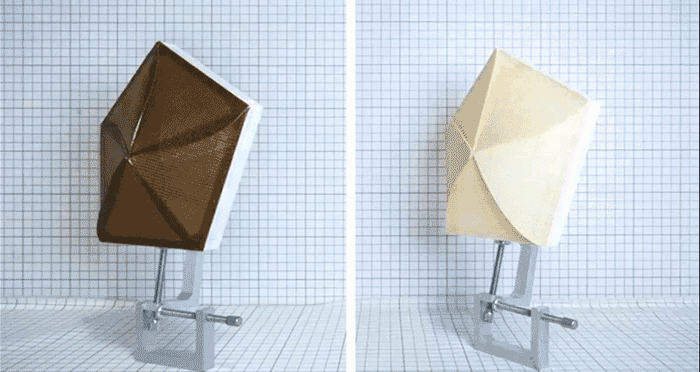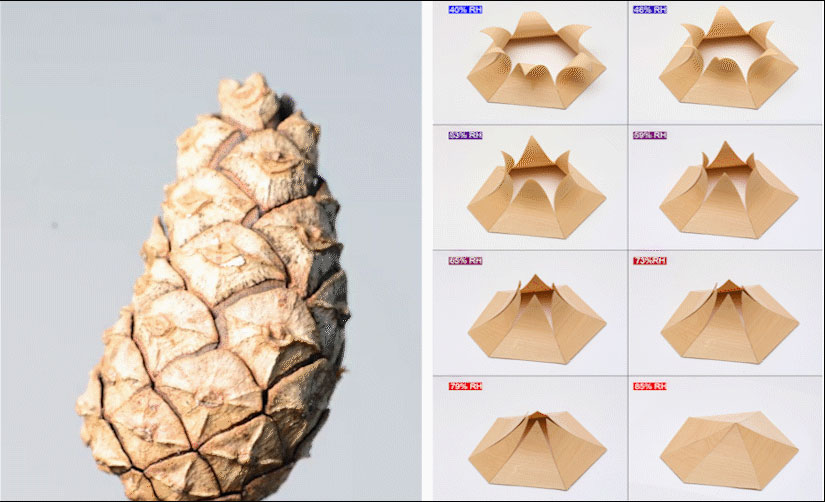‘Hygroscopic’ means to react to the presence of moisture in the air by attracting and holding water molecules from the environment. This property allows biological systems, such as plant cones, to better adapt to their surroundings. Now, a team from the University of Stuttgard is studying a way to implement similar properties in architectural structures, through basic FFF 3D printing using highly hygroscopic materials.
The team’s work focuses on using hygroscopically-induced dimensional change in printed components to trigger a shape change, as a response to external humidity conditions. Using advanced computational tools, it was possible to control the exact movements of the structure’s articulations. Basic desktop 3D printing allowed the team to produce each element of the structure, including both the sensor and the actuator, as a single part, just as it happens in nature.
Biomimicry – that is, replicating natural structures that appear simple, but are actually formed by repetitively complex geometries (such as fractals and voronoi schemes) – is one of the greatest potential applications of 3D printing. This project at the University of Stuttgard actually takes bimomicry to the next level, by introducing the possibility to actually control the movement of a hygroscopic material system. The team is, thus, implementing a form of 4D printing, represented by a 3D printed structure that can continue to evolve or move through time, as shown in the video below.
Curiously enough, hygroscopy is a trait common to many materials used for 3D printing, such as most plastic resins, including: nylon, polycarbonate and PET. Implemented in architecture, it would allow structures to move like biological systems, which rely on differentiated materials and material systems that act, at the same time, as sensors, actuators, and regulators. This, in turn, results in a structure that is far more efficient than conventional engineering systems that rely on discreet functional components.
This also is not a new approach for architecture, only in the past it was based on actuated wood-veneer composite systems (wood is also hygroscopic), leading to the University of Stuttgard’s HygroScope Installation at Centre Pompidou in Paris and other experimental projects. The team at University of Stuttgart, formed by Prof. Achim Menges, David Correa, Steffen Reichert, seeks to expand on these investigations by implementing one more element of control, through the possibilities offered by digital additive manufacturing, thus engaging the design challenges at a deeper material level.
Implementing such a system would result in environmentally responsive architectural systems that might, for example, alter their shape to fully exploit atmospheric conditions, further reducing their energy consumption and requirements. For example, by having elements that face toward or away from the sun to optimize the use of energy and heat provided. They would make a perfect addition to the 3D printed housing complexes of the future.






